GREATER




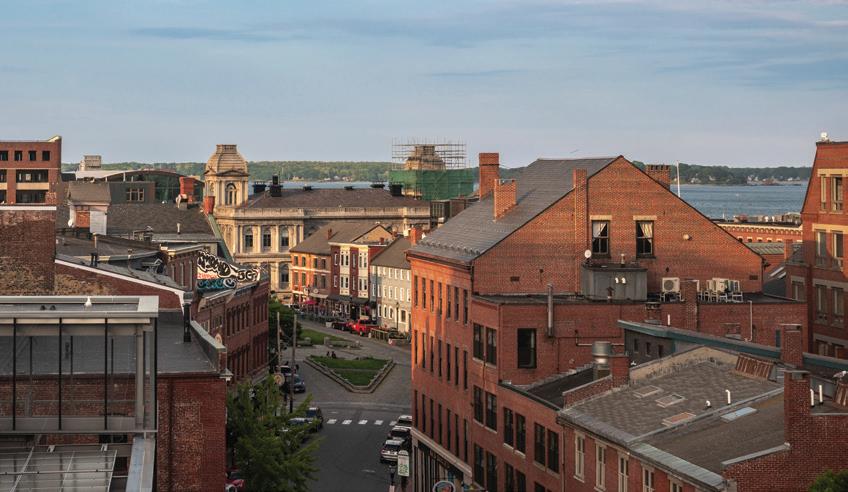


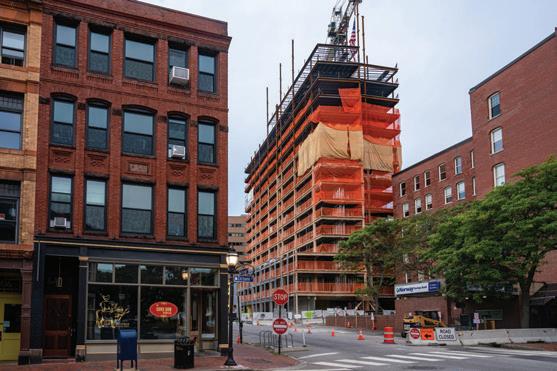
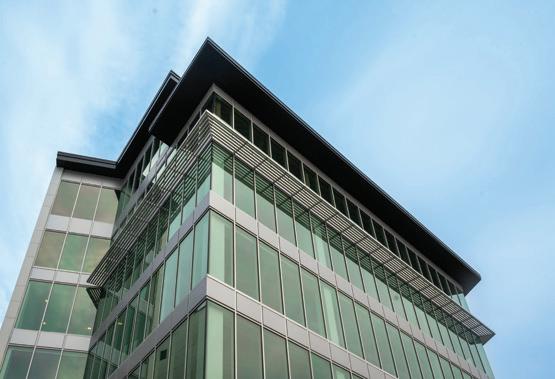







As we head into a new year with an eye on forecasting the market, we’re reminded of how volatile recent years have been. It’s hard to believe, but by the time you read this message, the pandemic will have started three years ago.
Since early 2020, we’ve all been forced to grow accustomed to changes in how we work, recreate, and travel. Here at The Boulos Company, we’ve been watching, learning, adjusting, and advising our clients in what is admittedly a tough environment in which to make decisions. Uncertainty abounds, and 2023 is looking to be another tumultuous year. Global unrest, inflation, stock market swings, interest rate increases and changes in work styles have all contributed to difficulty in the broader commercial real estate market.
On a brighter note, from a company perspective 2022 was best year we’ve had in many ways. Our brokers have set records for transaction volume, we added an office in Manchester, New Hampshire, and we’ve grown bigger with more talent than ever.
In 2022 I took the helm as president of our Maine operations, and Nate Stevens is now our designated broker.
On behalf of all of us at Boulos, I’d like to express our deepest gratitude to Drew Sigfridson for his nearly 10-year run as managing director, in which he oversaw our rebound from the Great Recession and kept building from there. Drew is still on the team, focused on brokerage (his true passion) and our New Hampshire operations. He’ll be a hard act to follow, but I am looking forward to stewarding this company through the months and years ahead, continuing to grow and evolve as Northern New England’s largest commercial real estate firm.
At Boulos, our values are Respect, Excellence, Integrity, Passion, Collaboration, and Balance, all of which inform every transaction with our clients and associates, and they will continue to guide us as we advise you in the years to come.
Sincerely, Jessica Estes President
As the premier commercial real estate brokerage in Northern New England, The Boulos Company is dedicated to providing unparalleled service to owners, investors, and tenants. With offices in Portland, Maine, Portsmouth, and Manchester, New Hampshire, we offer a full spectrum of solutions, including strategic leasing, expert sales advice and execution, and comprehensive consulting for all commercial real estate sectors, from office and retail to industrial, multifamily, and investment properties. Our team of professional agents possesses a wealth of knowledge and expertise, and we utilize our national network and in-depth local market insights to offer a truly consultative approach. We look forward to building successful partnerships & helping our clients realize their goals in 2023 and beyond.
Office Market Outlook 4 2022 Vacancy Rate Summary 6 Downtown Portland Class A Space and Asking Rates 9 Capital Markets Overview 10
Industrial Market Outlook 12
Central Maine Market Update 14 Lewiston-Auburn Market Overview 16 Housing Shortage Conundrum 20
Relocating Your Business in 2023 24 Predictions 26
Life Science and What it Means for Maine CRE 28 Offshore Wind: The next Driver of Maine’s Economy? 30 Maine’s Shifting Supermarket Landscape 32 Property Conversion and Adaptive Reuse 34 About Us, Notes, and Credits 36 Maine Brokerage Team 37

Portland, ME One Canal Plaza, Suite 500 Portland, ME 04101 +1 207 772 1333
Portsmouth, NH 1 New Hampshire Ave, Suite 207 Portsmouth, NH 03801 +1 603 427 1333
Manchester, NH 650 Elm St Suite 102 Manchester, NH 03101 +1 603 333 1333
© 2023, The Boulos Company. All rights reserved. No portion of this document may be reproduced or transmitted without written permission from The Boulos Company.
www.boulos.com mainemarketoutlook.com
One more year has come and gone since the pandemic began, and here at The Boulos Company, we’re constantly evaluating its ongoing overall impact on the Greater Portland office market. The dust seems to have settled somewhat in terms of the pandemicinspired shift in office requirements, and there is some stability now on that front for both tenants and landlords. However, we do not believe we’ve seen the final impact of the pandemic on the market, and it could be another year or two before we’re out of the woods. Last year’s office market survey was somewhat of a surprise when the overall direct vacancy rate fell. Still, the trends started to resemble past disruptions in the office market, including the financial crises in 2007–2008. This year’s survey continued to display that trend. The amount of sublease space and “gray space” increased dramatically in 2021, and we wondered when and how badly this was going to affect the direct vacancy rates in 2022.
As a whole, the Greater Portland market remained strong over the last 12 months, with the direct overall vacancy rate decreasing to 6.38% in 2022. However, it’s still lower than the 2020 vacancy rate of 6.97%. In addition, the amount of sublease space on the market remained relatively the same, a good sign, possibly indicating some stability for future direct vacancy rates. The combined total vacancy rate is 9.14%, the highest it has been in six years due to the historically high sublease rate. Overall, this is a healthy vacancy rate for Greater Portland, and the increase can be attributed to specific submarkets.

Both the Class A and Class B vacancy rates fell for the second straight year, for a combined rate of just 6.41%, down from 9.92% in 2020. The 2022 vacancy rate isn’t quite back to pre-pandemic levels, which were driven by historically low Class A rates. Still, the improvement in the market over 24 months is certainly a positive sign for the office market recovery on the Portland peninsula. The Class A rate has improved to 3.75%, down from 6.60% over the previous year, and this includes the addition of two significant buildings: 110 Thames Street, now occupied by Sunlife, and 12 Mountfort Street, leased by Covetrus. These two buildings alone added 210,000± SF to the market, both projects negotiated before 2020. The 100,000± SF of sublease space downtown is almost entirely attributed to the Class A market, and there is a significant amount of gray space in this market as well. This drop in the Class A market may be short-lived, depending on whether demand can keep up with new vacancies in 2023.
The Class B vacancy rate in 2022 is 9.48%, down from 13.32% in 2020. The improving Class B market can be attributed to the conversion of office space to residential/ hospitality uses, as well as most Class B buildings being occupied by small to mediumsized tenants that are locally owned and controlled—a subset of office tenants that best weathered the pandemic. There is also considerable gray space in the Class B market, but that is likely to be offset from more significant building conversions over the next year.
In last year’s survey, we noted that the suburban market, and two submarkets in particular, were slated for a possible increase in vacancies, given the amount of sublease space added in 2021 and the significant amount of grey space we anticipated. This prediction was unfortunately accurate, as the overall suburban vacancy rate increased to 7.59% from 6.67% the previous year. This may not seem like a significant jump, but the increase is attributed to just two submarkets, the Maine Mall area and the portion of Suburban Portland closest to the Maine Mall. In fact, 82% of suburban direct vacancies are all within two square miles of each other, concentrated along I-95 and around the Maine Mall. The 2022 Maine Mall area Class A vacancy rate is 16.22%—almost tripling from 2021 (5.83%) and the highest Class A suburban submarket vacancy rate since we’ve started publishing this annual market outlook. In addition, nearly all of the 218,000± SF of sublease space in the suburban markets is concentrated in the Maine Mall area. This is important to track as these subleases convert to direct vacancies, and it may be a few years before this submarket sees marked improvement.
Other suburban submarkets, including Westbrook, Scarborough/South Portland, and Falmouth/Cumberland/Yarmouth, improved in 2022. However, they were overshadowed by the mall area, the largest of the suburban submarkets, which clearly drove the overall increase. With a lack of sublease space being offered or significant anticipated vacancies in the other suburban submarkets, we can expect similar vacancy rates in the near future.
The medical office submarket continues to be the best-performing class in the Greater Portland area. The total vacancy rate is 0.80%—below 1% for the third consecutive year, with only two small vacancies out of 1,500,000± SF of medical office space on our survey. The total size of the submarket increased by 35,000± SF with construction completed on 113 W Commercial Street, the new home of the Veterans Affairs outpatient clinic. While landlords are considering converting from office buildings to medical office, the significant infrastructure needs of medical office buildings, in conjunction with increasing costs of construction, are making these conversions more difficult. The demand for medical office space is also expected to continue to grow. Unfortunately, we do not see much relief for medical office tenants in the near future, as vacancy rates are projected to remain low in Greater Portland.
Predictions on the office market are somewhat more straightforward than they have been the last two years, as office occupiers have adapted to a new way of working and meeting their evolving needs. Similar to the financial crisis in 2007–2008, it may be another year or two before vacancy rates level off and demand begins to outpace supply once again. Over the next 12 months, there will continue to be a tale of two markets, as the downtown market remains relatively strong and the suburban market experiences above-average vacancy. With the amount of grey space downtown poised to hit the market in 2023, there very well could be an increase in the downtown Class A vacancy rates. At the same time, Class B will likely continue to improve as more office conversions come to completion. In the suburban markets, specifically the Maine Mall area, there may not be much help from the limited demand, as negative absorption is expected again in 2023. This also creates growing opportunities for office tenants in the market, and while the best opportunities depend on a tenant’s size and location requirements, this should help create some demand in 2023.
12% 10% 8% 6% 4% 2%
2017 2018 2019 2020 2021 2022 12% 10% 8% 6% 4% 2%
DOWNTOWN VACANCY RATE
SUBURBAN VACANCY RATE
2017 2018 2019 2020 2021 2022 12% 10% 8% 6% 4% 2%
2017 2018 2019 2020 2021 2022
MEDICAL VACANCY RATE
LOCATION CLASSIFICATION TOTAL RENTABLE 2022 AVAILABLE SF 2021 VACANCY RATE 2021 AVAILABLE SF 2022 VACANCY RATE 2022 SUBLEASE 2022
CLASS A 2,416,327 109,447 5.02% 90,527 3.75% 110,911
DOWNTOWN PORTLAND
CLASS B 2,099,074 260,985 12.29% 199,075 9.48% 14,181
SUBTOTAL 4,515,401 370,432 8.61% 289,602 6.41% 125,092
CLASS A 988,021 121,845 12.26% 131,756 13.34% -
CLASS B 880,199 72,947 7.82% 25,807 2.93% -
SUBTOTAL 1,868,220 194,792 10.11% 157,563 8.43% -
CLASS A 866,624 40,917 4.81% 13,737 1.59% 11,302
CLASS B 238,039 13,658 5.74% 8,072 3.39% 1,500
SUBTOTAL 1,104,663 54,575 5.01% 21,809 1.97% 12,802
CLASS A 544,923 5,700 1.05% - 0.00% -
WESTBROOK
CLASS B 144,586 12,638 5.94% 3,300 2.28% -
SUBTOTAL 689,509 18,338 2.42% 3,300 0.48% -
CLASS A 1,612,339 96,296 5.83% 261,579 16.22% 207,569
CLASS B 325,290 46,040 11.95% 20,000 6.15% -
CLASS A 436,915 29,687 6.79% 29,662 6.79% -
CLASS B 526,264 11,808 2.24% 4,035 0.77% -
SUBTOTAL 1,937,629 142,336 6.98% 281,579 14.53% 207,569 SCARBOROUGH, SOUTH PORTLAND
SUBTOTAL 963,179 41,495 4.31% 33,697 3.50% -
CLASS A
SUBURBAN TOTAL 4,448,822 294,445 6.57% 436,734 9.82% 218,871
CLASS B SUBURBAN TOTAL 2,114,378 157,091 6.85% 61,214 2.90% 1,500 SUBTOTAL 6,563,200 451,536 6.67% 497,948 7.59% 220,371
CLASS A 1,175,566 1,650 0.15% 9,460 0.80%CLASS B 267,304 13,545 5.07% 2,066 0.77%SUBTOTAL 1,442,870 15,195 1.11% 11,526 0.80% -
8,040,715 405,542 5.22% 536,721 6.68% 329,782
4,480,756 431,621 9.21% 262,355 5.86% 15,681
12,521,471 837,163 6.73% 799,076 6.38% -
12,521,471 335,806 2.70% 345,463 2.76% 345,463 TOTALS 12,521,471 1,172,969 9.42% 1,144,539 9.14% 345,463
BUILDING SQ FT AVAILABLE SQ FT PRICE/ SF MG. OCCUPANCY SUBLEASE FLOORS BUILT 1 ONE CANAL PLAZA 116,424 1,738 $28.50 98.51% 7,536 10 1970 2 TWO CANAL PLAZA 44,273 N/A N/A 100% N/A 4 1972 3 THREE CANAL PLAZA 64,495 855 $28.50 98.67% N/A 6 1980 4 ONE CITY CENTER 202,754 10,585 $28.35 94.78% N/A 13 1984 5 TWO CITY CENTER 26,753 4,129 $19.95 84.57% N/A 5 1985 6 68 COMMERCIAL STREET 18,691 9,677 $36.00 48.23% N/A 3 2000 7 145 COMMERCIAL STREET / 1 MARKET STREET 30,400 N/A N/A 100 % N/A 3 2000 8 254 COMMERCIAL STREET 95,000 2,502 $24.00 97.37% N/A 5 1900 9 511 CONGRESS STREET 128,400 11,000 $24.00 91.43% N/A 9 1974 10 7 CUSTOM HOUSE STREET 49,600 N/A N/A 100 % N/A 5 2000 11 110 THAMES STREET 90,000 N/A N/A 100 % N/A 4 2022 12 100 FORE STREET 80,000 N/A $36.61 100 % 15,458 7 2020 13 280 FORE STREET 69,481 N/A N/A 100 % N/A 5 2004 14 300 FORE STREET 61,129 N/A N/A 100 % N/A 6 2007 15 1 HANCOCK STREET 97,528 N/A N/A 100 % N/A 4 2019 16 54 MARGINAL WAY 50,989 N/A N/A 100 % N/A 5 2002 17 63 MARGINAL WAY 34,000 N/A $33.33 80.93% 6,483 4 2007
84 MARGINAL WAY 102,804 N/A N/A 100 % N/A 10 2008
2022 was the tale of two halves. I harken back to the 2017 Superbowl where the Patriots were down 28–3 in the first half. Unfortunately, in this analogy, we CRE professionals are Atlanta, and we all know how that story ends. The first half of 2022 was red-hot: investment sale volume tripled, compared to the first half of 2021. These phenomenal results in Maine mirrored a national trend. However, just as in the storied Falcons/Pats game, this unexpected trend did not continue, and eventually fate, in the form of rising interest rates and recession fears, flipped the game, just like the Pats.
In this report, I’ll provide some quantitative and qualitative analysis to explain why this happened and offer some predictions on what the future holds. Let’s hope this article has some shelf life, and that these observations age better than the proclamations by the pundits who said the game was over at halftime.
For perspective, interest rates in the United States averaged 5.43% from 1971 until 2022, reaching an all-time high of 20% in March of 1980 and a record low of 0.25% in December of 2008.
In September 2022, The Fed raised the federal funds rate by 75 bps to 3.0%–3.25%, the third straight three-quarter point increase, pushing borrowing costs to the highest since early 2008.
In case you need a reminder that you should have refinanced or sold in 2021 (courtesy of NorthMarq). See chart below.
According to TradingEconomics.com, the federal funds interest rate in the United States is expected to be 4.50% by the end of Q4 2022. In the long-term, the United States Fed Funds Rate is projected to trend around 4.75% in 2023 and 4.00% in 2024.
The cost of debt has risen 18–23% in 2022, with another 5–7% increase in 2023, for good measure, before rates are projected to drop in 2024. Assuming investors will demand similar returns, we see downward pricing pressure reach 10–15% over the next two years from the peak of 2021.
There will continue to be availability of investment product in 2023, assuming sellers accept the new market realities. We expect steady activity, with investors capitalizing on an opportunistic environment. In summary, if you’re a commercial real estate owner or investor, it’s time to consult with us to obtain an updated opinion and finetune your approach. The Boulos Company looks forward to working with you to develop and execute your real estate strategy in 2023.

10-YEAR COMMERCIAL DEBT (LIFE COMPANIES)
2.70%-3.80% 180-290 bps spread 50%-75% LTV 25-30 yr am
2.85%-3.65% 135-215 bps spread 50%-75% LTV 25-30 yr am
4.75%-5.35% 150-210 bps spread 50%-75% LTV 25-30 yr am
5.15%-5.65% 160-210 bps spread 50%-75% LTV 25-30 yr am
INVESTMENT
BY THE NUMBERS 2022 2021 NUMBER OF TRANSACTIONS 35 22 DOLLAR VOLUME $145,557,551 $68,638,295 SIZE (SF) 1,592,107 552,441 CAP RATE (AVERAGE) 7.05% 7.75%
NATIONAL INVESTMENT
(PER JLL*) 2022 (Q1 + Q2) 2021 (Q1 + Q2) NATIONALLY $32.8 billion $27.1 billion OFFICE Up 7% RETAIL Up 10% INDUSTRIAL Up 22%
STREET ADDRESS CITY SALE PRICE SIZE (SF) CAP RATE (%) 100 Foden Road South Portland $29,750,000 77,656 6% West Bayside Portfolio Portland $25,000,000 180,000 DND 119 Lisbon Street Lisbon $22,917,681 293,763 7.05% 16-22 Station Avenue Brunswick $18,000,000 71,583 7.05% 100 Main Street Westbrook $14,900,000 101,250 DND 44 Exchange Street Portland $13,450,000 79,464 DND 311 Darling Avenue South Portland $11,900,000 72,490 8.08% 4 Noble Street Brunswick $11,750,000 41,000 DND 1 Tourmaline Drive & 10 Almond Avenue Lewiston $10,200,000 63,840 5.40% 70 Bennett Street Bangor $8,100,000 195,690 7.90% 82 Glenridge Drive Augusta $8,025,000 126,286 6.90%
PHOTOS: Brunswick Station; 1 Tourmaline Drive, Lewiston; 311 Darling Ave (Atlantic Place) BROKERED BY THE BOULOS COMPANY
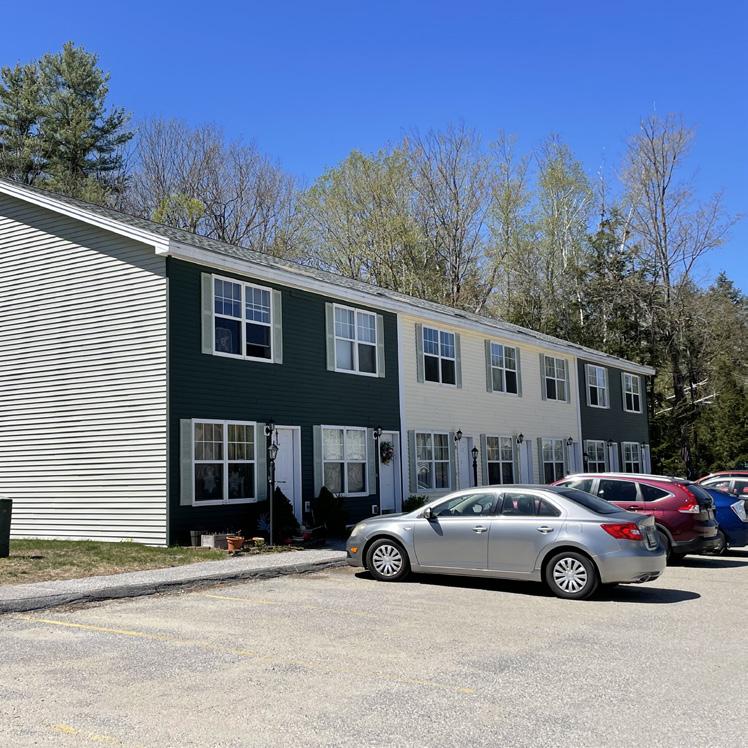
SOURCES: JJLL U.S. Net Lease Market Update August 2022; NorthMarq Boston News & Rates October 26, 2022, July 30, 2022, December 21, 2021, December 1, 2020; TradingEconomic.com 2022 Data

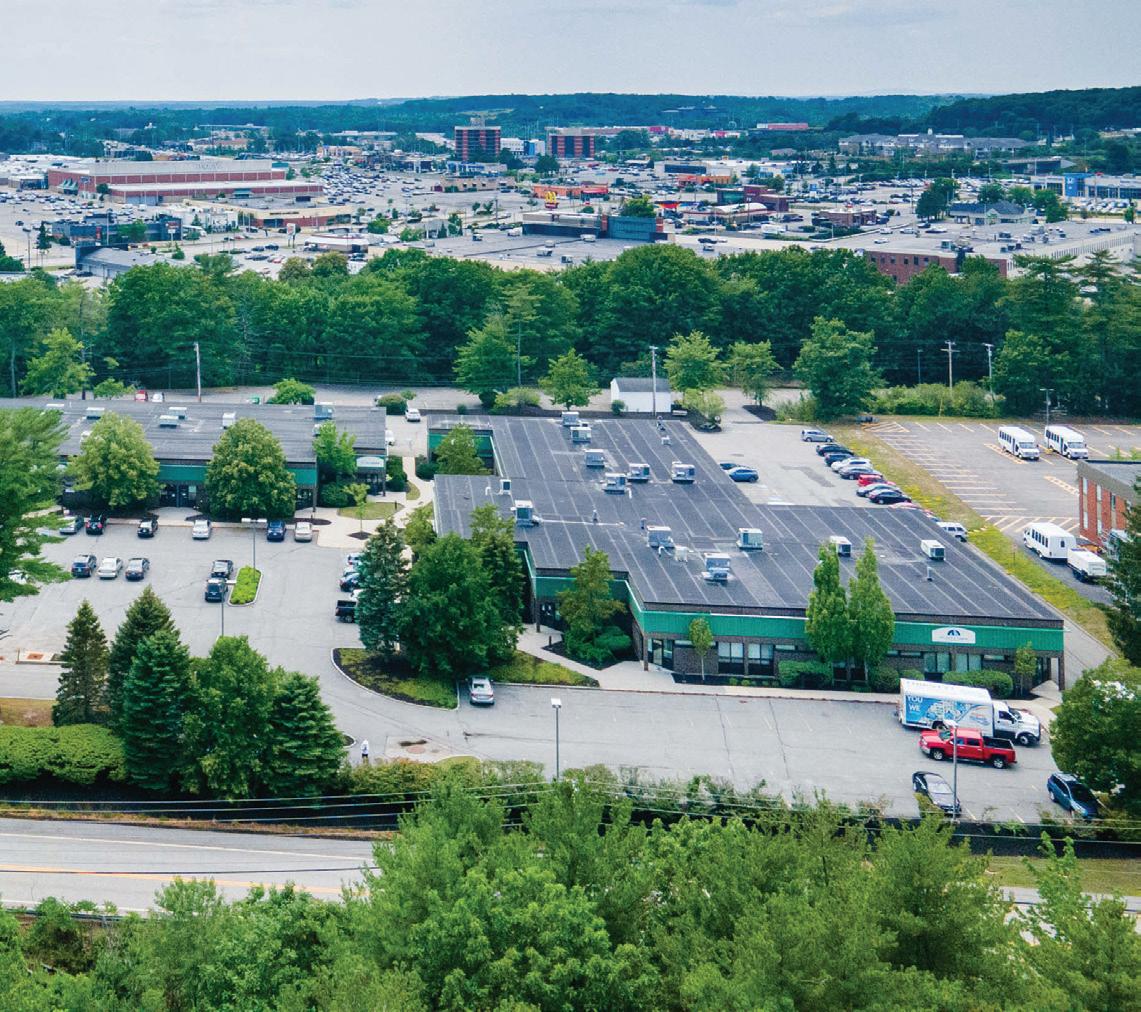
Has supply met demand? Has demand softened? It’s a bit complicated right now. We are still living in a market with an approximate two percent vacancy rate for the industrial sector. With that said, we are also living in a new economic reality, with inflation creating headwinds in an environment where construction costs are already inflated, thanks to continuing supply chain issues and a labor shortage. It seems like the perfect storm for a huge dip, and perhaps it will happen in larger markets, where there is more speculative building with increased risk exposure. In the Greater Portland market, we seem to be shielded from both the highest of highs and the lowest of lows. Will that continue? First, I’ll break out the sector in two ways: leasing vs. capital markets.
Lease rates in our market continue to climb for Class A space due to the lack of supply. I wrote about this last year (and the year prior). Will we hit a tipping point where it is not feasible for tenants to pay the new market rate?
There is a flight to quality across the board. Tenants, big and small, are willing to “pay up” for an efficient building that suits their needs perfectly. When I say “big,” I mean tenants leasing manufacturing and warehouse space. Flex buildings are smaller and appeal to tenants looking to bring all operations under one roof.

These smaller spaces, or flex spaces, have incredibly high demand. If a 2,000± SF space with a drive-in door and small office hits the market, it has multiple tenants vying for it, and it commands lease rates in the low to mid-teens. Tenants range from small start-ups to large Fortune 100 companies. Landlords are typically able to lease the space as-is and can dictate their terms as it relates to the lease rate and length of the lease term. I think we have hit our top when it comes to pushing lease rates for these flex spaces.
For the second bucket, I’ll focus on space that is over 20,000±
SF. If you search today for available space that is 20,000± SF or greater, the results are very thin. Narrow that down to Class A or Class B space, and it gets even thinner.
So, what is the trend we’re seeing for tenants looking to lease? Consistent with the last two years, there is a lack of supply. However, it does seem that some of the available space currently being marketed has been on the market longer than what we’ve seen in the last two years. Does that mean the market is softening? I tend to think so in the sense that the current economic environment is causing some tenants to pause before making a leasing decision. However, this goes back to the “flight to quality” thesis, which remains the theme. If available product in the market doesn’t fit for a company looking to lease, new construction is the only avenue. Construction costs have increased, so lease rates must increase accordingly to meet yield expectations. Companies can justify a higher lease rate than they were historically paying because they are able to streamline logistics and save money elsewhere through the process. I also attribute this flight to quality to companies trying to retain their workforce and attract employees. It’s not news that there is a labor shortage, especially among skilled labor in the manufacturing and warehousing industries.
The issue we see with new construction is timing. Many tenants in the market are looking for space within 6–12 months. New construction typically takes 18–24 months. Tenants end up saying it doesn’t work for their timeline and wait to see if other options become available. When none do, they’re back to square one and looking at trying to make new construction work. An owner and/or developer needs to have the right team in place, one that can execute on budget details and provide a proposal to tenants for their evaluation. The more efficient the process, the higher the likelihood that the deal comes to fruition.
With new construction that is not driven by an owner/user, we see space being offered in two different buckets: buildto-suit, where the developer waits for a tenant to sign a lease
before starting construction, and speculative building, where the developer gets a building permitted and approved and starts construction. Speculative building is risky, but we have seen deals in 2022 that successfully transacted because the developer broke ground and the tenant felt comfortable with the project’s likelihood of completion. This goes back to what I previously stated regarding occupancy timing expectations of tenants.
The capital markets for the industrial sector started out incredibly strong in Q1 and Q2 of 2022. We saw quite a few investment transactions of scale go under contract and close prior to and through the first couple of interest rate increases. The fear of rates increasing further accelerated deals throughout Q2. However, we saw investment sales come to a halt in the second half of the year. What’s causing this pause? It isn’t solely driven by increasing interest rates.
There is a disconnect between seller expectations and buyer reality. The fact is, there is plenty of capital out there aiming to be deployed in the industrial market. We’ve seen yield expectations tighten a bit, but if there is no movement on the seller side, the deal doesn’t make sense, given the current rate environment. With interest rates doubling over the last nine
months, deals have become incredibly tight or just not feasible for buyers looking to make any type of return.
Capital wants to be placed in the Greater Portland market. As I referenced earlier, we don’t see the highest of highs, but we also don’t see the lowest of lows. This is a strong market from a fundamental standpoint. If we can bridge the gap between seller expectations and buyer reality, deals will continue to transact, and we will see demand continue from a capital markets standpoint.
We will continue to see a bit of a slowdown in the first half of 2023, dictated by the overall economic conditions and forecast. If the market finds a “new normal,” that could change things significantly. If businesses and investors feel as though the environment has stabilized, they can predict and plan for the future with more confidence. It is widely known that you can’t time the market perfectly, but when you can navigate the waters with more confidence, it helps businesses and investors make faster decisions. It’s time for sellers to hit reset. Closing the gap between buyer reality and seller expectations would be an excellent thing for market activity. The fundamentals are still strong in our market as long as the return expectations are met. We’ll see where things shake out over the next 12 months – Watch for our mid-year industrial market update so that we at The Boulos Company can continue to keep you in the loop.
Despite economic turbulence over the past twelve months, public and private money has spurred continued investment in the state’s capital city. Prior to the pandemic, Augusta seemed poised to springboard on a budding economic resurgence. Finally, the city seems to have recovered from the pandemic and is back on track for revitalization. New businesses have filled both pre-pandemic and pandemic-induced vacancies downtown, and the downtown district itself has expanded farther north on Water Street.
Government regulations and incentives continue to push renewable energy sources, and inflation has spurred ballooning energy costs. This has led to a renewed focus on solar energy. The Maine Department of Transportation has commenced installation of solar arrays on three separate pieces of stateowned land in Augusta – two along I-95 and one at the Augusta State Airport. Additionally, Woods End Laboratories, a climatesmart farming laboratory, leased 13,500 square feet of lab and manufacturing space at 150 Whitten Road.
As most Mainers are aware, the current housing shortage puts a strain on both availability and affordability. Maine Housing data estimates the need for an additional 870 affordable units, with an additional 1,465 needed for nearby Waterville and Winslow. Investors and developers in Augusta have set their eyes on addressing the issue locally. In the near future, residential investment is projected to approach $100 million, according to Keith Luke, Augusta’s economic development director. A 260-apartment project off Rod Road by the John Flatley Co. will account for $20–25 million of that. Additionally, a $10 million LIHTC project at 10 Civic Center Drive by Tim Gooch will provide 42 affordable units for those aged 55 and older. Gooch sees Augusta’s stability as a capital city as a good reason for continued investment. Public money from Augusta Housing also has two projects in pre-development, slated for 34 units off Malta Street and 45 units in a “convenient in-town location.”
In 2021, the Inland Fisheries and Wildlife leased 43,000± square feet at 353 Water Street. It was the largest office lease in Central Maine since the onset of the pandemic. In 2022, the General Services Administration leased nearly 50,000 square feet from AVANGRID at 83 Edison Drive, edging out the IFW lease for that title. The GSA deal was a big win for the Augusta office market, as it’s been in the works since 2020 when the pandemic put it on hold. The deal came full circle this year, as employers have learned the value of physical office space to teamwork, camaraderie, and creativity, and people have begun to return to the office.

In Gardiner, activity continued in the popular Libby Hill Business Park. PODS completed construction on their state-ofthe-art, 54,000 square-foot self-storage facility, and ground-up industrial construction has continued from users and developers alike. In the FirstPark campus, a solar developer purchased 33.3 acres to build a 3.64 MW solar field just north of T-Mobile’s call center. Additionally, private wealth management firm J.M. Arbour, with offices in Hallowell and Arizona, is moving to 348 Water Street and expanding.
Colby College once again led the redevelopment and resurgence of Waterville’s downtown in 2022. The Lockwood Hotel, built by Landry/French Construction for Colby, was used as temporary student housing when it was completed last year, while the college finished new dormitories on campus and addressed pandemic-related concerns. As of August, the brandnew, 53-key hotel is now open to the public. Additionally, the Paul J. Schupf Art Center, Colby’s $18 million downtown hub for the arts, recently completed construction on the 30,000± SF facility and held its grand opening on December 17th.
Dirigo Capital Advisors, led by Kevin Mattson, is taking advantage of the opportunity to fill the aforementioned 1,465unit housing shortage in the greater Waterville area. Mattson and Dirigo are redeveloping the former MaineGeneral-owned

PROPERTY CITY TENANT COMPANY
PROPERTY LEASED
SF PROPERTY TYPE
Augusta US General Services Administration 48,598 Office 650 River Avenue South Gardiner Orion Ropeworks, LLC 30,000 Industrial
83 Edison Drive
40 Waterville Commons Drive Waterville Office Superstore East LLC 23,942 Retail
7 Industrial Park Road Skowhegan Douglas Dynamics, LLC 14,500 Industrial
38 Leighton Road Augusta J.S. McCarthy Printers 14,500 Industrial 50-170 Kenedy Memorial Drive Waterville Old Navy 12,500 Retail
Seton Hospital into a mixed-use building with 68 apartment units and various commercial spaces.
Notably, in Winslow, STORE Capital (NYSE: STOR) purchased the 112,000± SF Orion Ropeworks building at 953 Benton Avenue for $6.725 million and incorporated a long-term saleleaseback agreement with the tenant.
The Central Maine office market is projected to remain stable as we continue to see a flurry of small and medium-sized office leasing activity from state and private entities. The industrial market remained strong in 2022, and as of now, we see no indication of a decline in industrial leasing activity.
PROPERTY SOLD
82 Glenridge Drive
PROPERTY CITY SALE PRICE
Augusta
PROPERTY SF PROPERTY TYPE
$8,025,000 126,286 Multifamily
14 Gabriel Drive & 249 Western Avenue Augusta $4,800,000 48,000 Office
681 Riverside Drive Augusta $2,900,000 36,644 Industrial
40 Waterville Commons Drive Waterville $2,650,000 23,748 Retail
53 Industrial Drive Augusta $2,300,000 34,200 Self-Storage
2022 proved to be another exciting year for commercial real estate in Lewiston-Auburn, with numerous development projects and new tenants entering the market. With a potential recession looming, it’s difficult to predict how the market will be impacted; however, let’s begin on a positive note and recap a record-setting year.
Record sale prices, substantial rent growth, and new development, coupled with motivated city officials, helped Lewiston-Auburn have a record year in the multi-family space. According to comparable sales provided by MLS from 2020–2021, there wasn’t a single multi-family in Lewiston-Auburn that sold for over $100,000/unit; this was not the case for 2022. Notable sales over the past year included:
1 Tourmaline Drive & 10 Almond Avenue, Lewiston (Off-Market Transaction)
Sale price=$10,200,000 #/units=65 $/unit=$156,923
84 Lisbon Street, Lewiston (Off-Market Transaction)
Sale price=$745,000 #/units=6 (included one 1st floor commercial unit) $/unit=$124,167
79 Ridgewood Avenue, Lewiston Sale price=$710,000 (asking $600,000) #/units=6 $/unit=$118,333
1 Buckley Street, Lewiston Sale price=$925,000 #/units=8 $/unit=$115,625
1172 & 1176 Lisbon Street, Lewiston Sale price=$3,404,000 (asking $3,199,000) #/units=37 $/unit=$92,000
251 Minot Avenue, Auburn Sale price=$700,000 #/units=12 $/unit=$58,333
It’s important to note that record-low interest rates, inflation, and pent-up demand from the investor community likely led to record-setting sales in 2021–2022. Sellers will inevitably be forced to adjust pricing in today’s economic climate for deals to pencil out as interest rates continue to climb.
Over the last three years, Lewiston-Auburn’s industrial market has experienced high demand with historically low supply, like elsewhere across the state. As a result, we’ve experienced a substantial rise in sale price and lease rates. However, is there a reason to be concerned? According to a recent article published by the Wall Street Journal, “E-commerce-related distribution centers and other warehouses are facing a squeeze from a surge in construction and softening demand.” Maine is usually slow to feel the impact of national trends, and Lewiston-Auburn’s industrial market shows no signs of slowing down, and we’ve seen a significant wave of speculative industrial development.
Notable new projects include the following:
22 Gendron Drive, Lewiston 43,698± SF
Features 8 loading docks, 4 drive-in doors, and 18’–20’ ceilings. Construction is expected to be completed late 2022 or early 2023.
855 Lisbon Street, Lewiston 64,800± SF
Features 8 loading docks, two drive-in doors, and 30’ ceilings. Construction is complete.
1775 Lisbon Street, Lewiston 50,000± SF Currently configured as an office, and the owner plans to convert to industrial. The space will feature eight loading docks, 16’ ceilings, and a 5:1 parking ratio.
The office sector, like elsewhere throughout the state and country is still largely impacted by the pandemic and workfrom-home model. Although smaller office users are somewhat active in the market, larger tenants are still trying to figure out their long-term strategies. According to data from the New England Commercial Property Exchange, there were zero traditional office leases over 10,000± SF in 2022, and there were only two traditional office sales over 10,000± SF.
On a positive note, the healthcare sector has been thriving. Exciting new development projects include the ConvenientMD under development at 600 Center Street in Auburn. ConvenientMD plans to construct a 5,000± SF facility with 25 parking spaces. Across the bridge in Lewiston, Fresenius Medical Care plans to construct a one-story, wood-framed building for a dialysis clinic at 42 Mollison Way. It’s expected to open late 2023 or early 2024.
As for notable completed projects, Central Maine Healthcare opened its new $37 million cancer center in Lewiston earlier this summer. It’s a state-of-the-art medical center, exemplifying CMMC’s long-term investment in the L-A market. According to an article published in the Sun Journal, “The Cancer Care Center will bring CMMC’s surgical oncology, radiation oncology and chemotherapy units together under one roof, an improvement for patients who walk across campus to access cancer services on opposite ends.”
Despite soaring costs for rent and healthcare, compounded by inflation, U.S. retail sales have remained largely unchanged. During the peak of the pandemic, many retailers were forced to adapt and re-evaluate their strategies. According to a recent Bisnow report, “retail availability nationwide is at its lowest

level since before the Great Recession…Asking rents are growing faster than they have in more than ten years as the pace of new construction hits record lows and retail demolition speeds up.”
The bankruptcies of some of the weaker players have adjusted the market and led to fewer retailer bankruptcies through June of 2022 than any other year since 2015. On a national scale, fast-casual restaurants and grocery stores (among others) have been seeing some of the strongest overall performances. This trend seems to have taken shape locally as there have been several new restaurants entering the Lewiston-Auburn market.
Notable projects in development include a new 6,600± SF Olive Garden restaurant at 649 Turner Street in Auburn; Target is opening a new store later this year at 603 Center Street in Auburn; Subway is opening a new store at the former Holy Donut space at 910 Minot Avenue in Auburn. Notable openings this past year include Five Guys at 223 Center Street in Auburn; Aroma Joe’s at 791 Kittyhawk Avenue in Auburn; Otto Pizza at 730 Center Street; and Jersey Mike’s at 600 Center Street.
With several national tenants in the Lewiston-Auburn market looking at development sites and/or existing space, 2023 is shaping up to be another exciting year.
SOURCES:
The Sun Journal, 2022 https://www.sunjournal.com/2022/10/24/amidneighborhood-concern-lewiston-considers-zone-change-for-farwellstreet-property/
The Sun Journal, 2022 https://www.sunjournal.com/2022/10/24/ photo-olive-garden-shaping-up-in-auburn/ U.S. News, 2022 https://money.usnews.com/investing/news/ articles/2022-10-14/u-s-retail-sales-unexpectedly-flat-in-september
The Wall Street Journal, 2022 https://www.wsj.com/articles/ecommerce-warehouses-commercial-property-hot-spots-start-tocool-11666051637
Bisnow Media, 2022 https://www.bisnow.com/national/news/ retail/despite-economic-headwinds-retail-space-remains-scarce-inus-114454
The Sun Journal, 2022 https://www.sunjournal.com/2022/10/25/thebuzz-move-over-holy-donut-make-room-for-subway/
PROPERTY SOLD: STREET ADDRESS
119 Lisbon Street
PROPERTY CITY SALE PRICE
PROPERTY SF PROPERTY TYPE AT CLOSE
Lisbon $22,917,681 293,763 Industrial
1 Tourmaline Drive & 10 Almond Avenue Lewiston $10,200,000 63,840 Multifamily
490 Pleasant Street
Lewiston $6,445,000 88,034 Hotel
198-200 Main St/3 Lowell Street Lewiston $5,300,000 65,982 Office

774 Center Street
Auburn $4,520,000 12,619 Mixed-Use
PHOTO: Corey Templeton Photography BROKERED BY THE BOULOS COMPANYLike many states across the country, Maine has a housing crisis. The ripple effects of COVID and the needs of asylum seekers have created an influx of people coming to Maine. Simultaneously, the average number of people per household is shrinking, and this exacerbates the demand for additional housing units. New construction is not going to solve the problem quickly, as construction hard costs are at all-time highs and developers find themselves quickly buried in complex bureaucratic processes and the attendant soft costs, which make construction harder and more expensive. Meanwhile, interest rates are the highest they’ve been since 2002, both increasing the cost of construction and decreasing what a buyer can pay for a home.
The housing crisis is a supply and demand issue. We have a lot of demand and not enough supply, and when that happens prices go up. MaineHousing has estimated that Maine needs 20,000 – 25,000 new housing units to meet demand, 9,000 in the Portland area. Until supply and demand are in equilibrium, we will continue to see housing prices increase.
The only way to end our housing crisis is to build more housing
Housing is built by for-profit developers (FPDs) and nonprofit developers (NPDs). NPDs finance their developments by leveraging federal, state, and local funds, including the lowincome housing tax credit program. NPDs typically build affordable housing, creating housing for some of the most vulnerable people in our community. NPDs are limited, however, both by the amount of available funding and because the process for receiving those funds and tax credits is complex and requires a sophisticated developer.
To build more affordable housing, voters need to support policies and politicians that allocate more funds to NPDs as they did this past November across the country.
For profit developers typically do not take advantage of public funds. FPDs assess whether a project is worthwhile based on construction inputs and projected revenue. Construction inputs include hard costs (such as raw materials, labor, and land) as well as soft costs (such as engineering, permitting, legal, and accounting fees). Projected revenue is determined by estimating what a project will sell or lease for once completed. FPDs put these numbers into a proforma to estimate a return on investment for the project.
FPDs are constrained by the realities of the marketplace. They need to be able to give their financiers—banks, pension funds, private equity investors—an adequate return on their investment based on the risk profile and other investment alternatives. If they can’t, the project “doesn’t pencil,” they can’t get funding, and the project doesn’t get built.
To build more housing by FPDs, construction costs need to go down and/or projected revenue needs to go up.
On average, the hard costs of construction increased 35% from January 2020 to September 2022. The increase in the cost of housing in new developments can be traced directly to this. Additionally, the volatility in hard costs has created a great deal of risk for developers, contractors, and sub-contractors who make decisions based on quoted prices with little assurance that those quote prices will be accurate once the costs are incurred. A labor shortage has also made staffing construction sites difficult. The unknowns of future construction prices and hard costs, coupled with uncertainty of labor, adds risk to any development which have killed several projects in Southern Maine over the past two years.
The only way to lower these hard costs—or reduce their escalation—is for supply chains to normalize. In Q3 of 2022,
hard cost escalations slowed and a recent study found that escalation should stabilize to 2–4% annual increases by 2023–2024. There is not much that we as individuals or as a community can do to control construction hard costs.
Soft costs are construction costs that are not related to raw materials, labor, or the physical building of the project. They include architectural drawings, environmental certifications, engineering studies, financing, legal fees, and any regulatory costs. Many of these soft costs are necessary. You can’t build a building without architectural plans, for example. However, some soft costs can be altered through policy. Fee-in-lieu costs, permitting fees, impact fees, etc. are governmentimposed costs that can be reduced or altogether removed to lower construction costs and allow more developments to be built. The June 2022 report by the National Multifamily Housing Council found that regulations imposed by all levels of government account for an average of 40.6% of multifamily development soft costs. None of this goes into actually constructing the units.
In Portland, a mandatory inclusionary zoning ordinance requires
developers to make 25% of units in any 10+-unit development affordable, or pay a fee-In-lieu of $162,339 per affordable unit. This is effectively a tax of $40,585 per unit when the 25% requirement is spread across the entire project. It’s a prime example of how unnecessary regulatory costs can kill a housing project and discourage development.
The recent increase in interest rates also plays a substantial role. Higher interest rates increase the rates on construction loans, reduce the affordability of homes for buyers, and drive up the rents required to support a project.
Developing housing is a numbers game, and projects must pencil to be built. Hard costs have gotten more expensive, but those are market realities and out of our control. Some soft costs, on the other hand, are unnecessary costs associated with regulations. Reducing or removing them can make housing creation less expensive and trigger new construction in the market.
Portland, Brunswick, Yarmouth, Freeport, Scarborough, South Portland, and Falmouth all have some form of housing
regulation, either in place or being discussed. These policies have traceable, quantitative consequences, which make soft costs more expensive, killing projects. They also have a qualitative impact. Nationally, 47.9% of developers said they won’t even consider projects in jurisdictions with inclusionary zoning requirements, while 87.5% avoid working in jurisdictions with rent control.
Liberalization of zoning laws to allow for more density, taller height restrictions, smaller off-street parking restrictions, smaller impervious surface restrictions, and smaller setbacks allow developers to get more units onto the same amount of land. More units mean more revenue, and that means a greater likelihood that a project will make economic sense and be built. The Boston Fed’s New England Policy Center said that allowing more density, combined with relaxing height restrictions is the “most fruitful policy reform for increasing supply and reducing multifamily rents.” Economists from UCLA and the Legislative Analyst’s Office of California found that building new marketrate housing lowers the cost of housing in cities for everyone.
In April 2022, Maine passed LD 2003 which will go into effect in July 2023. Once in effect, the bill will allow property owners to build accessory dwelling units in residential areas and allow up to two units on a lot zoned for single-family housing. For larger communities with designated “growth areas,” up to four units could be allowed. Additionally, the bill allows for a 2.5x density bonus for developers who hit affordability requirements.
It will be interesting to see how LD 2003 plays out in 2023. It may encourage developers to reevaluate developments based on the new density, and those developments may prove economically feasible and get built.
Westbrook, a town that has been welcoming towards developers, currently has 1,301 housing units in planning review. As of November, 2022, in Portland, where the feein-lieu effectively taxes 10+-unit developments, there are under 300 housing units in planning review. A clear slowdown has occurred since Portland increased its inclusionary zoning requirement in 2020. What does this tell us? Housing creators go where they’re wanted and where there are fewer economic barriers. If we want to be proactive in ending our housing crisis, local governments need to enact policies that incentivize development, not make it more expensive.
To end the housing crisis, more housing must be constructed. For more housing to be constructed, many things have to fall in line for projects to start making financial sense. Many of these factors are out of our control, but enacting policies that incentivize development is not.

Historically, transitioning to a new space has always been a complex process, as it requires planning, organization, and diligence. Welcome to 2023, where thanks to everything from global supply chain issues to rising inflation and other costs, each piece of the relocation process carries even more weight. The Boulos Company has been helping businesses find, secure, and plan for new locations since 1975 – Over the years we’ve provided our clients with countless tips and suggestions on relocation practices based on how they’ve changed over time. Here are a handful of items you should keep in mind that are more important than ever considering the many moving pieces affecting commercial real estate both throughout the country and here in Maine.
One of the most critical aspects of the relocation process is planning ahead. In a world where tenant build-out projects are missing deadlines left and right, this has never been truer. Planning starts with creating a timeline, considering all stages of the move to prevent disruption of day-to-day operations. Depending on where you are in the process and what your needs are, the timeline can involve identifying what your business needs are in a new location, identifying and touring those spaces, negotiating a lease, updating the space, buying furniture, coordinating the move, updating branding, and the list goes on. A tenant representation broker can work with you to estimate an outline of how long these items should take so you know what to account for in your plan.
Once you’re zeroing in on a space, you’ll also want to understand your new layout and make decisions about how you will utilize the space. If there are areas in the current space that are not working, identify them and aim to address those issues in your new footprint. Make note of potential ways in which your business can adapt to your new location. For major renovations, determine whether an architect is required and keep in mind what is necessary in terms of building permits and how much time they may take to acquire. These are decisions that should
be made well in advance of your move, and you should have a firm grasp on what it will take to use your space the way you’ll want to before you sign a lease.
TIP #2: REVIEW YOUR IT NEEDS:
Relocating is an excellent opportunity to upgrade office technology, and the way companies leverage IT has changed considering hybrid work environments. We suggest taking ample time to review the IT and communication structure you have in place in your current location, comparing it to what you’d like to see in the new one, and outlining what you’ll need to do to fill in the gaps. An example of this that comes up frequently is IT in the conference room – We don’t need to tell you that video conferencing is more common than ever, but the webcam you have set up in your current office might not cut it in 2023, and setting up video conferencing capabilities in a conference room so that everyone can effectively see/be seen and hear/ be heard can look a lot different depending on the size of your company, the size of your meetings, and what you want to do in them
Regardless of hybrid work, the pre-pandemic IT-related relocation considerations still apply. Your new office may require new network cabling, additional phone lines, or even a dedicated server room. If you want to have high-speed Wi-Fi available throughout, you may need a Wi-Fi mesh network. Many of these decisions need to be made before any construction/ renovation, which is why IT should be considered throughout site selection and build-out processes. If you don’t have an IT professional on staff, you can hire an IT consultant to make sure that all your systems are ready to go on day one.
Lastly, you’ll also want to consider cybersecurity, and whether any changes in IT and IT-related processes can put your systems at risk. When you consider that over one million computer viruses are being released every day, making sure your network is protected from hackers is paramount. A cyber security professional can be very valuable, helping to keep important information safe.

Whether you choose to apply for permits and approvals on your own or through an architect or space planner, it has never been more important to get out ahead of this process. Cities in Maine have experienced historically long wait times for years, and it is expected to continue. There are many factors affecting this. The economy is still hot, and demand for construction projects that require permits is up in both residential and commercial sectors. This demand is coming from more people than ever in the advent of giant spikes in Maine’s inbound move rate. All this demand is being serviced by a relatively small city/town staff, which was already dealing with more permitting requests than ever before, even prior to any pandemic-related demand spikes.
Could all the above start to simmer down in 2023 as the economy cools due to increased interest rates? It’s a possibility, but as of now, we’d recommend you plan for the worst. Understand what you need to do with your space early on to make it work for you and take the time to understand what portions of that work will require permits.
If you need to do construction to your space, talk with a space planner or architect to understand what work will require permitting. You can always reach out to the city about permitting questions but be realistic regarding how long it will take to hear back, and keep this in mind as you’re communicating with your tenant representative or your new potential landlord. Different cities and towns will have different processes and systems for permitting, so keep this in mind as well.
The way people work is changing. The age of flexible work has arrived, and it looks like it’s here to stay. You have new criteria to consider to ensure a work environment that optimizes productivity and attracts and retains good talent.
So how do you design a space for the future? Each business is different and there is no one-size-fits-all solution. Many companies now have a mix of in-office employees, remote employees, and hybrid employees, and different reasons for bringing employees into the office. Those goals for how you want to use your office, how often your employees are in the office, and the type of work they are doing while they are there, all have an impact on how you layout your space in 2023, as different types of work require different types of space.
We highly recommend engaging your staff to figure this out. Staff feedback is key and can help you get a sense of how much private space, shared offices, and collaboration spaces you should have based on the types of work people are doing, and the benefits that they get from doing that work in the office. Measure twice, cut once, and get feedback from your team for key decision-making. If you don’t know where to start when it comes to getting useful information like this from your staff, you can bring in a commercial broker, space planner, or architect to begin the conversation. A good space planner can help you extrapolate what types of workspaces are most important to your employees, and how much you need of them based on when your people are on site.
Based on our analysis of historical figures and recent market trends, we believe the office market will see an increase in vacancy rates over the next one to three years. This will be true for both the downtown and suburban office markets. However, we believe downtown Portland will fare better.

The significant increase in office space availability we see developing is primarily due to the residual effects of the pandemic. Most office workers were encouraged or required to work remotely during the pandemic. Doing so was appealing to many, who could save on commute time and gas expenses, and slip away from work to walk the dog or prep for dinner.
Having spoken to a number of CEOs, most have said the productivity of remote workers did not decrease and, in some instances, increased. Given this and the shortage of available workers in the market, employers are reluctant to force employees back to the office full-time. As a result, a hybrid model in which workers spend two to three days a week in the office and the rest of the time working remotely remains popular. What was once thought of as a temporary accommodation due to the pandemic has developed into a longer-term phenomenon.
Consequently, companies are rethinking the size of the office space they need when their leases approach expiration. We have seen a variety of strategies taken by business leaders—from the radical decision to eliminate office space entirely to a more typical reduction in the size of their office space footprint. Others have gone a different route, trying to increase the appeal of their office to encourage attendance. However, reduced square footage seems to be the trend, and it’s contributing significantly to the increase in office vacancies in downtown Portland and its suburbs.
• In downtown Portland the upper floors of older office buildings with smaller footprints were converted to residential condominiums or apartments. With office market demand weak and the demand for housing high, this can make sense for many buildings. This is illustrated by the conversion of 178 Middle Street; the partial conversion of 482 Congress Street, 50 Monument Square, and 121 Middle Street; and the conversion of the top floors at 136 Commercial Street and 111 Commercial Street, just to name a few. However, it’s more difficult for larger Class A office buildings to be converted to residential due to the size and depth of their floor plates, making the economics less feasible.
We don’t see this phenomenon happening in the suburbs to any great extent, as suburban office buildings tend to have larger floor plates, making conversion impractical.
• Due to the anticipated office space vacancies, we do not expect developers to break ground on new office buildings in the near future. This will certainly be the case for any speculative office construction.
• The combined Class A and B downtown office vacancy rate is 6.41% and is expected to increase over the next two years.
• In the suburbs, the combined Class A and B office vacancy rate is 7.59%. We have no doubt the vacancy rate in the suburbs will increase, with leases expiring and the occupants vacating or significantly reducing their presence.
• We have shifted to an office tenant’s market, which allows tenants to negotiate rates and obtain flexible terms and build-out concessions that were not available pre-pandemic. Landlords will continue to be incentivized to provide larger tenant improvement allowances and more competitive lease rates in exchange for financially strong tenants and long-term leases.
• While multiple offers for office space were never the norm, such bidding wars will be extremely rare in the next two to three years.
• The sublease vacancy rate in the market will be less of a factor in the overall rate because the lease term of the sublease spaces will either have expired or will soon expire, putting spaces once available for sublease on the market for direct lease.

Tenants in downtown Portland, as well as the suburbs, should give serious consideration to renegotiating their existing leases now to take advantage of the weak market and an increasing supply. If tenants want to stay in their current space, it makes sense to approach the landlord and offer an extended term in exchange for reduced rent and some tenant improvement dollars. This will likely appeal to most landlords.
Having an experienced commercial real estate broker who knows the market handle these negotiations can create savings for the tenant, which should cover the cost of the broker’s fee many times over.
We’ve all heard the buzz around “life sciences” and the industry’s anticipated growth in Maine. When the Roux Institute opened in late 2020, interest and speculation around what it would mean for Maine heightened, and judging by the numbers, there’s been a real explosion in job growth. There are 484 life sciences companies in Maine, and employment in the industry has grown by 42% in the last five years. This growth is faster than in all other New England states and doesn’t seem to be slowing down. The industry contributes $2.2 billion to Maine’s total GDP and continues to create more jobs as it helps to reshape our economy. If this trend continues, what will it look like for Greater Portland and the commercial real estate community?
Before diving into what the continued expansion of life sciences could mean for Maine CRE, we should address what the life sciences really are, as the term is being thrown around as a catch-all when describing the future of Maine’s economy and job market. The life sciences broadly cover businesses that focus on research, development, and manufacturing of products that improve the lives of any living thing. As it pertains to commercial real estate: knowledge workers need office space, R&D specialists need lab space, and biomanufacturers need large industrial facilities. So which can we actually expect to be a boon to Greater Portland?
When it comes to office space for knowledge workers, Portland and the suburban markets have a lot going for them. The infrastructure exists, office rents are cheaper than in large metropolitan areas like Boston and Cambridge, and the quality of life here in Maine is very attractive to employees, as evidenced by Maine being ranked the #1 inbound move destination by a 2021 Atlas Van Lines migrations pattern study.
Portland is also extremely well-positioned for companies looking to open an office with a hybrid work style with short commute times to downtown from surrounding communities. In addition, the drive to the life sciences hub of Boston/ Cambridge is under two hours for companies that may want to have a footprint in both cities, with collaborating teams in each. While we’re all aware that the office market is relatively soft compared to other CRE markets in the wake of COVID
and hybrid work models, Greater Portland’s market has remained a little more resilient, and continued growth in life science companies could eventually help to offset some of the increased vacancies.

When it comes to R&D and biomanufacturing locations, the biggest drawback to Maine is a lack of existing talent. As local entrepreneur, Jean Hoffman mentioned in our recent discussion on the topic, “Biotech and pharmaceutical manufacturing requires specially skilled people with experience complying with U.S. Food and Drug Administration requirements. The best places to manufacture are places that have these people.” The bad news? According to Jean, Maine doesn’t have a lot of these skilled workers, and having proximity to a center of intellectual activity such as Boston/Cambridge doesn’t necessarily help, given these jobs don’t lend themselves to a hybrid work style. The good news? Maine does have some qualities that might attract businesses opening large biomanufacturing facilities. For instance, according to USA Today, Maine is cheaper than all other New England states and offers an abundance of opportunities.
Maine’s lack of high-level talent is typically the hurdle that start-ups and young companies run into while scaling up: there simply aren’t enough experienced candidates. But now, with the Roux Institute at the helm, we are in a period of transition, and many believe this will change. Currently, while Maine is an objectively idyllic place to live, moving here for a job poses a risk to employees because they must consider what will happen if the job doesn’t work out. They need to know they have options. Otherwise, they could be stuck.
As Portland grows into a center for life sciences, it will increase the desirability of the area for other companies and for talent, creating a compound effect. Each new business that moves to Portland makes it more feasible for future talent to come. As businesses start to call Maine home, we can predict a further influx of life sciences movers and shakers, and there is at least the potential that this could lead to an increase in biomanufacturing companies starting up in or moving to Maine.
The Roux Institute is doing an excellent job attracting knowledge
workers to the area. Their future campus at the former B&M Baked Bean site will bring speakers, educators, students, researchers, entrepreneurs, and more to Portland, creating opportunities for new connections and sparking ideas. Ideally, students will attend the university and stay on to fill an existing life sciences job or start a related business. At the same time, as the labor pool continues to grow through this feeder system, more companies will view Portland as a viable location for an office, a branch of their knowledge-based operations, or even an HQ.
This hope is starting to become a reality. Last year’s Techstars Accelerator program of 10 start-up companies ended with three businesses deciding to permanently stay in Maine – not an amazing hit rate, but it’s a start. In the words of Quincy Hentzel, president of the Portland Regional Chamber of Commerce, “The Roux Institute is a magnet, and they are attracting exceptional talent. We need to keep them here.”
The institute is also helping Maine workers keep up with trends. As Jean Hoffman states, “The Roux Institute is going to be crucial in training people in the important digital skills of the future. All life sciences are becoming increasingly integrated with digital skills. It is a very important effort.” The success of the Boston/ Cambridge area—Ground Zero for the life sciences—is attributed to the many nearby universities, allowing for an endless stream of scientists and thinkers. The more educational facilities we can bring to the area, the better to bring the dream of a Maine-based life science hub to reality.
In 2019, USA Today noted that Maine has the most affordable land in New England, and there’s lots of it— it’s almost as large as all of the other New England states combined. With an inexpensive workforce—30%—50% lower than the national average wage, and an abundance of affordable land and resources, Maine offers life science companies enticing value.
SOURCE: Biome.com
USA Today, 2019 (https://www.usatoday.com/story/ money/2019/05/08/the-most-and-least-valuable-states/39442329/)
ABOVE: Some of the Bioscience companies in Maine Source: Biomaine.org

SOURCE: USA TODAY, 2019
STATE COST/ACRE
Maine $6,142
Vermont $7,439 New Hampshire $19,840 Massachusetts $102,214
Connecticut $128,824 Rhode Island $133,730
PHOTO: Louis Reed, Unsplash

From national to local levels, government contributions towards offshore wind efforts in 2022 were among the most extensive we’ve seen, making offshore wind—expected to become a $1 trillion industry by 2040—one of the largest economic opportunities in Maine’s history. The Department of Energy has invested in research & development, the Department of the Interior is making $3 billion in loans available to project and transmission developers, and the Department of Transportation has made over $230 million in grants available for port infrastructure upgrades. Alongside all these contributions, Congress has implemented an investment tax credit for developments built before 2026. Today, all eyes are on the $2.16 million grant the U.S. Economic Development Administration has dedicated to the state of Maine to build a roadmap for the development of the highly anticipated and innovative Offshore Wind (OSW) deployment.
With these major investments in play, offshore wind is inevitably a topic that many have heard of, but may still find a foreign concept. The reality is that offshore wind may already be a factor in Maine’s economy. Essential acreage for turbine construction/transportation, and millions of square footage in warehouse space for R&D offshore wind hubs are being secured all along the East Coast in Massachusetts, Rhode Island, New York, and most recently Virginia. With Maine surpassing $2 billion in state and federal funding for OSW initiatives over the past decade, many anticipate that Maine will become another East Coast hub in short order.
The University of Maine’s Partnership with New England Aqua Ventus I to create the country’s first floating offshore wind turbine is helping the U.S. lead the way in offshore wind. The University of Maine’s patented VolturnUS floating concrete hull technology was developed to help support wind turbines in deep waters, and New England Aqua Ventus is the first demonstration project utilizing this technology. With the Biden-
Harris Administration advancing leasable areas in deep water, their hope is to expedite the deployment of 15 gigawatts (GW) of offshore wind capacity by 2035. That is enough clean energy to power over five million homes. Between the University of Maine’s research and state funding, Maine’s efforts are focused on bringing floating OSW technology to scale in order to unlock opportunities across the country where the seabeds are too deep for fixed offshore wind installments.
The OSW industry’s national economic output is expected to reach $12.5–$25.4 billion by 2030, according to the U.S. Offshore Wind Power Economic Impact Assessment, issued in March 2020. The industry is also expected to create 19,000–45,000 jobs by 2025 and 45,000–83,000 jobs by 2030.

Maine’s workforce is among the oldest in the country, with nearly 65,000 residents expected to retire by 2030. In November 2019, the state of Maine developed a 10-year economic development plan—the first in over two decades—to focus on driving talent and innovation to the state. The plan proposes to create over 75,000 jobs by 2030, and offshore wind will play a big role. With Maine offering one of the best offshore wind resources in the country, the research being done at the University of Maine is critical. The innovation of floating wind turbines is estimated to produce 160,000 jobs in the areas of planning, construction, operations, and maintenance.
The impact of this burgeoning industry on real estate, both commercial and residential, will be multifold. As the state finalizes contracts for the work, these contractors are already on the hunt and beginning to negotiate terms for marine locations and transportation hubs with storage. These commercial uses, along with workforce housing and office space for professions supporting the industry, are sure to see a spike as locations are identified.

While retail had its fair share of struggles in 2022, the sectors year was highlighted by the strength of the supermarket and the supermarket-anchored shopping center. On a national level, the large national supermarket players, including Whole Foods, Kroger, Ahold Delhaize, and Albertsons reported strong earnings.
On the real estate investment side, institutional money continues to pour in to acquire supermarket properties. Additionally, national REITS have, by and large, shifted their sole focus to the specific acquisition of grocery-anchored shopping centers. According to JLL’s Grocery Tracker Report, in 2021 alone, there were over 700 grocery-anchored retail trades, totaling 13.3 billion dollars in sales, a record for the sector.
But what does this all mean on a microeconomic level here in Maine? All indications show that in Maine, supermarkets have plenty of room to grow, and we will continue to see the sector expand across the state.
Most notably, Massachusetts-based Market Basket has signaled a vote of confidence in the state on the strength of the Maine market. By all accounts, Market Basket’s opening at Waterstone’s Rock Row project in Westbrook has been an enormous success. The store has generated over 2.8 million visits over the last year, according to data from Placer.ai.
As a result of this success, Market Basket has continued its expansion in the state, announcing plans to open a third Maine store in the Topsham Fair Mall to serve the local Topsham/ Brunswick community and provide convenient access to Augusta and Lewiston/Auburn. In October of 2022, Market Basket officially received all site plan and DOT approvals on the state and local level for the 17-acre, 80,000± SF supermarket, with plans to open in late 2023.
Hannaford Supermarket isn’t showing any signs of slowing down, either. There had long been talk of the Payne Road Shaw’s in Scarborough moving on from that location, and in
late 2022, Hannaford announced plans to backfill the store with an opening in 2023. Hannaford will add a much-needed supermarket presence to the bustling Payne Road retail corridor that includes Sam’s Club and Scarborough Gallery tenants such as Lowe’s, HomeGoods, and Marshall’s.
However, last year wasn’t all “hugs and handshakes” in the world of the Maine grocery store. Shaw’s Supermarket announced the closure of two of its Greater Portland stores in the face of labor struggles, rising inflation, and increased competition from Market Basket, Hannaford, and Trader Joe’s. As noted, Shaw’s is closing its Payne Road location and has already closed its Westbrook Crossing store (located directly across the street from Market Basket). Shortly following these closure announcements, Shaw’s parent company, Albertsons, announced the news that it would be acquired by the National grocery chain Kroger: a massive, $24.6 billion deal between two titans of the supermarket industry.
So what does this all mean moving forward?
Surely, Kroger will not give up on Shaw’s strong Maine presence following its’ mammoth acquisition of Albertson’s. Expect to see more dispositions of underperforming stores in the short term, followed by a calculated commitment and expansion throughout the state in the longer term. Shaw’s continues to have a stronghold on some of the high-quality shopping destinations in Maine, which will be capitalized upon when Kroger restructures management and store operations.
Hannaford, the proverbial 800-pound gorilla in the world of Maine supermarkets, will also continue to capitalize on stronger stores, relocating stores to superior locations, and expanding into underserved markets throughout the state.
While Market Basket’s presence may not include the store volume of Hannaford (64 stores) or Shaw’s (19 stores), they have proven successful in capturing shopping dollars that are surely taking away from their competitors’ market share. Judging by
their latest Topsham announcement, expect Market Basket to continue its expansion up the I-95/I-295 corridor, one store at a time.

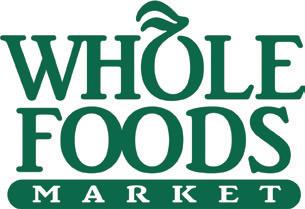

And what’s next for the former Sears box at the Maine Mall? It would be a great supermarket location, given its Greater Portland reach and convenient highway access. Might we see an Amazon/Whole Foods play? It would seem to make a lot of sense.
The landscape of the Maine supermarket is shifting. If anything, the pandemic only strengthened the grocery sector, both nationwide and here in Maine. Stores continue to focus on providing a pleasant shopping experience while also providing easy, more convenient online shopping features, including in-store pickup as well as two-hour delivery. With increased competition among the supermarkets, strong sales, and increased investment dollars, the Maine supermarket is poised for significant growth and quality enhancement. On the real estate side, expect to see plenty of “moving and shaking” in 2023 and beyond.

 PHOTO: B enziad, Unsplash
PHOTO: B enziad, Unsplash
Evaluating property, not on what it is today but rather its long-term potential, has long been a pillar of commercial real estate investing and development. Consider the vast changes in commercial real estate sectors that we’ve seen in recent years. Industrial, multi-family, and hospitality sectors have seen unprecedented growth from where they were just three years ago, while the impact of COVID-19 has created turmoil and uncertainty in the office market. These changes have created both a need and an opportunity to assess conversions and adaptive reuses, to best position a property to meet market demands, maximize revenues, and create long-term value and stability. Conversion and adaptive reuse is by no means a new topic in the commercial real estate industry, but it has certainly become a significant discussion point, given the recent market shifts.
With increasing vacancy rates for office space and the ongoing housing shortage, converting office buildings into multifamily housing is an increasing temptation. But although opportunities can be found with properties of the right configuration and financial positioning, several challenges hinder the potential for this type of conversion. The most notable is the economics of these projects: office buildings carry a high cost basis, combined with the increasing cost of construction. Many office buildings are carrying a cost basis of $150–$200/SF, depending on the market and building class. When you add in construction costs of over $300/SF for the infrastructure needs, upgraded code requirements, and finishes for residential use, the economics don’t pencil out. In addition, the floor plates of many larger office buildings do not support residential conversions. With large, open, deep floor plates designed to house a single office tenant all on one floor, these layouts often do not sub-divide well, resulting in even higher construction costs and interior spaces with no windows.
With that said, we are seeing developers who have been able to navigate these obstacles and unlock opportunities, namely, Redfern Properties converting 45 Forest Avenue in Portland into 81 residential apartments. This 75,000± SF building was purchased fully vacant and not encumbered by varying tenant leases, which is often the case with office buildings. Redfern
purchased the property for $32/SF and is also utilizing historic tax credits to support this capital-intensive project.
East Brown Cow is also finding success with the conversion of Class B office space into luxury hospitality rentals, branded The Docent’s Collection. The Collection is comprised of the upper floors of 115 Middle Street, 121 Middle Street, and 178–184 Middle Street, consisting of 21 completed units and another 27 in the pipeline. These smaller Class B buildings have floor plates that are more favorable to sub-division. Additionally, short-term hospitality rentals can generate higher revenues per square foot than long-term apartment rentals, which helps support the large capital investment for conversion.
Along with multi-family and hospitality conversions, we also see adaptive reuses to meet the demand for industrial/flex space. Lease rates for industrial space have historically lagged those of office space. However, over the past 24 months, we have seen the delta between the two diminish, with increasing lease rates for industrial product, driven by increased demand by industrial users, limited existing inventory, and increased costs for new construction. This has opened the door for the conversion of office buildings and even retail properties into industrial/flex uses.
Fork Food Lab is currently in the process of converting 95–97 Darling Avenue in South Portland into a commercial kitchen and food manufacturing facility. The 42,000± SF single-story office building was formerly owned by WEX.
Another example is JB Brown & Son’s purchase of One Davis Farm Road in Portland, with plans to convert the 48,000± SF two-story office building into a self-storage facility. Although challenged by lower ceiling height, these suburban office buildings can lend themselves well to lighter industrial and manufacturing-type uses. For higher clear heights and true warehouse space, former retail boxes can be an ideal opportunity, as shown by the repurposing of the Promenade Mall at 855 Lisbon Street in Lewiston. Formerly a 262,000± SF retail center, the Promenade has been converted into a high-bay industrial warehouse and expanded by an additional
65,000± SF. The large parking fields for retail and office buildings can provide a unique opportunity for potential additional development as they did at the Promenade Mall, or they can provide truck circulation and parking for users that may be limited at existing industrial properties.
Although we are seeing owners and users unlock opportunities with these conversions, it is important to note that many properties are challenged with restrictive zoning that does not allow industrial uses. Before embarking on a project of this nature, it is crucial to confirm that current zoning allows your planned end-use or that the property is located in a municipality that will support a change to the current zoning.
Whether it be industrial, multi-family, hospitality, or any alternative use, adaptive repurposing of spaces will forever be a part of strategic planning in commercial real estate as a hedge against the ever-changing ebb and flow of industry sectors and property life cycles. Looking ahead to 2023, as we continue to see the residual impact of COVID-19 on the office market, I suspect adaptive reuses will remain a hot topic. I anticipate seeing further repositioning of suburban office properties to support industrial and manufacturing demand, while conversions to multi-family residential will be limited and focused on smaller Class B buildings.
DEVELOPER PROPERTY NEW USE
Redfern Properties 45 Forest Ave, Portland Apartments
East Brown Cow 115 Middle St, Portland Hospitality
East Brown Cow 121 Middle St, Portland Hospitality
East Brown Cow 178-184 Middle St, Portland Hospitality
Fork Food Lab (Tenant) 95-97 Darling Ave, South Portland Food Processing/Commercial Kitchen

JB Brown & Son's 1 Davis Farm Rd, Portland Self Storage
Gendron Real Estate 855 Lisbon St, Lewiston Warehouse
Information contained herein is researched and provided by our in-house staff of administrative assistants, associates, associate brokers, and brokers.
We have included, to the best of our knowledge, all Class A and Class B office buildings in the Greater Portland area. Please feel free to contact us if we have inadvertently missed one.
Survey data collected as of 12/1/2022. Rents are shown as modified gross and defined as all expenses included, except electricity for lights and plugs, tenant’s janitorial, and parking. Rents not quoted as modified gross were converted by the addition of an estimated $1.50 for HVAC and common area maintenance expenses as reported by owner.
Retail space is not included in this survey.
Net Absorption measures the total amount of SF leased over a period of time minus space vacated during the same period.
Rental rates outlined in this survey reflect rates for direct lease availabilities. When a range of rental rates
The Boulos Company is a commercial real estate firm dedicated to serving owners, investors, and tenants, blending Maine and New Hampshire market knowledge with a global network.
We offer a full array of services including leasing and sales; property, facilities, project, and investment management; valuation, appraisal, research, investment strategy, and consulting.
In addition to our depth of services, we also offer a deep bench of qualified, professional agents. Our partners
are available, the prevailing rate is reported. Only direct lease rates are quoted in cases when direct and sublease space is available. When only sublease space is available, no rate is quoted. Subleased spaces that were occupied as of 12/1/2022 were not included as part of this Survey.
Definitions of Class A and B office buildings vary between markets. We define Class A office buildings as those that are investment-grade properties that feature a unique design with immediate access to parking. They must be ADA-compliant and benefit from highly professional property management. Class B office buildings are considered to offer utilitarian space without special amenities, are of ordinary design, except for historic, renovated buildings, and feature good maintenance with all floors handicapped accessible.
Please note that outside the context of this report, the Greater Portland market uses many definitions and thus any building noted herein may, as a matter of opinion, fall into a different category in the open marketplace.
and experienced brokers are seasoned experts in every commercial real estate sector, from office and retail to industrial, investment, and multi-unit property; and our systemized, in-depth training program ensures that their knowledge is shared with each new generation.
All of this reach, experience, expertise, and depth adds up to market leadership, and for clients, that means success. When it comes to New Hampshire and Maine commercial real estate opportunities, Boulos brings you more.




























